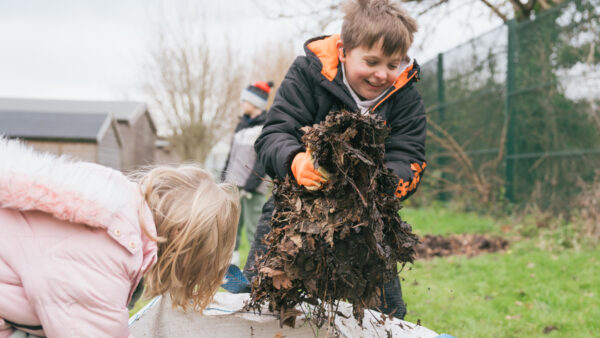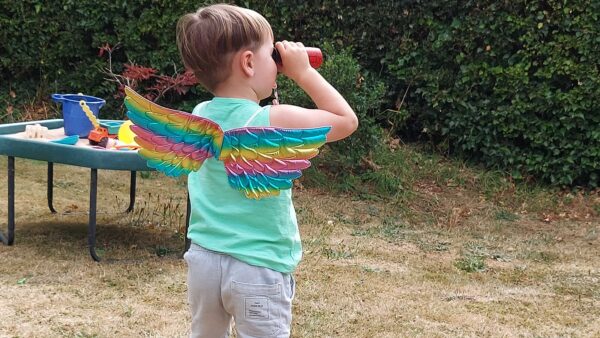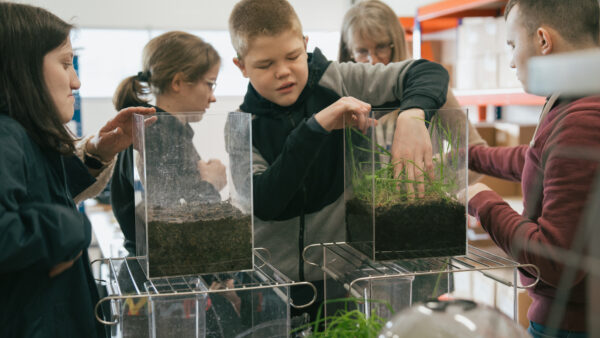How to make evaluation more inclusive
I’m sure we can all agree that evaluation is really important, grant funders are always looking for projects that can prove they are making a measurable difference and rightly so.
We use evaluation to check that our approach works and is having the desired impact, to make improvements and to ensure that we are listening to participants and meeting their evolving needs.
But it can be difficult to incorporate into an activity, we don’t want to ‘kill the mood’ or ask insensitive questions. It can also be hard to make sure everyone can contribute. We work with people with varying communication abilities from those with dementia who may find it difficult to remember a particular activity to people who are nonverbal.
We have therefore often found that traditional approaches such as questionnaires can be challenging. And let’s be frank, a series of questions can also be just plain boring!
So, here are some of our top tips to make evaluation more inclusive and fun, enabling everyone to contribute at the level appropriate for them. Empowering participants to feel a sense of ownership and independence rather than relying on others to answer for them is key.
1. Keep it simple
Focusing on one simple question at a time can allow participants to focus. With our dementia friendly activity groups, we scrapped long questionnaires and instead focused on asking one question every four months. Each of these questions is centred around a theme, for example, changes to someone’s mental or physical health, improvements to social isolation, developing resilience and coping mechanisms.
This can help to prevent people from feeling overwhelmed and can also allow for a deeper look into one issue.

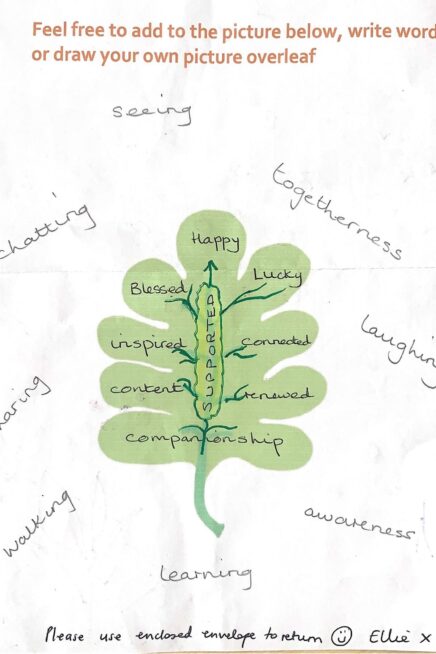
2. One size does not fit all
We find that different approaches suit different people. Some people want to take a form away with them and have a think, others want to give their response immediately. For some people, it is preferable to have a conversation, their personal circumstances can be complicated and they would rather explore this in a more informal and relaxed way.
Focus groups can be great for fostering an environment where participants can contribute in their own words, exploring both positive and maybe negative opinions. We’ve had some really useful feedback from independent focus groups run by someone who understands our approach, is skilled in conversing with different audiences and is also at arm’s length so not directly involved with the organisation. Some of the results from this approach help to get our impact across really quickly:
"It’s uplifting and positive. I’d be lost without it. It makes a great difference to how I feel, physically and mentally, I feel more positive afterwards"
"I feel healthy and valued. I love to be outdoors it makes me feel calm and happy"
3. Invite creativity
Not everyone wants to tick boxes or write reams about how they feel. Some would rather express themselves through drawing a picture. Often our surveys invite a creative approach, including illustrations that encourage respondents to add to or draw their own responses.
The focus is not on artistic ability but on conveying a feeling from experiencing our activities.


4. Symbols and images can bring words to life
Incorporating symbols or emojis can enable people to contribute themselves rather than relying on carers or family members. We often use Widgits, a symbol-based language used by people with learning disabilities. This can make a questionnaire more welcoming to all, for example, children, families and people who find reading or writing difficult.
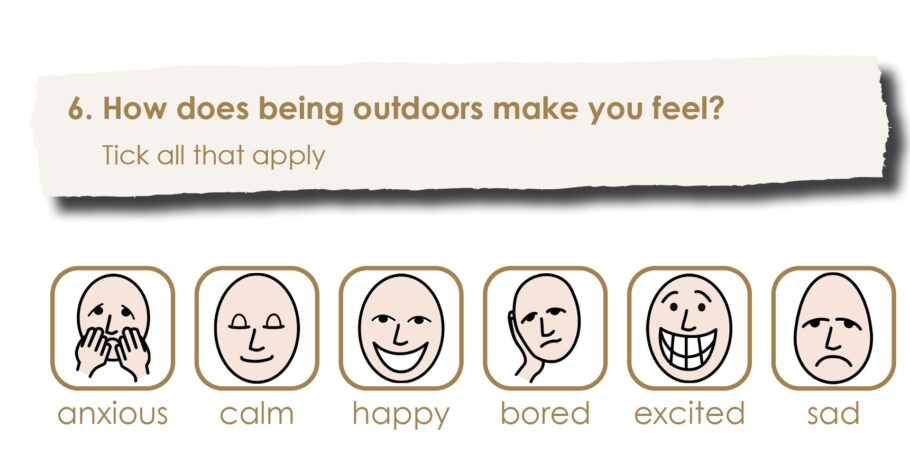
5. Make it playful
Making the evaluation an activity that feels like part of the day rather than an add-on encourages more people to get involved. Games can be designed to be done together so that everyone in a family or group can express their feelings about the event.
One of our techniques is called ‘how high five’. Families respond to a specific question related to the day by placing a hand-shaped sticky note on a wall at the height they felt reflected their experience. The higher the hand-shaped note, the better the experience. At one event where we used this approach, a child asked to get on their parents’ shoulders so they could get as high as possible!


and finally... test, develop and test again
Everything can be improved, and wording can be subjective. We like to test our approaches with participants before sharing them more widely. Even then, we find our techniques constantly evolve as we learn what works with different groups.
We recently had feedback on our use of the phrase ‘living your best life’ which someone found difficult within their own situation. We took this information on board, tested replacements and adapted our approach to ensure that everyone felt respected and included.
Showcase your impact
Evaluation can feel dry and arduous. It's not the reason you run a project, intervention or outreach programme so it's unlikely to be where your true passion lies. If you can find some creative way to lighten the data-driven load then you may find that it becomes a more enjoyable and productive task for everyone.
After all, it enables us to know what to build on and what to leave behind, if something works and has a real impact it will absolutely reveal itself in your evaluation.

